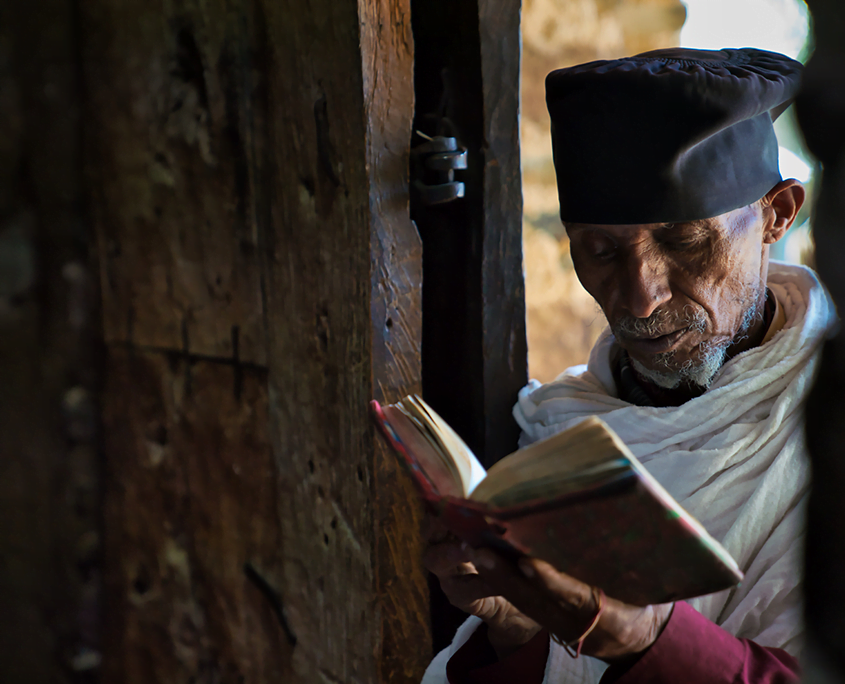A priest reading a book inside The Debre Birhan Selassie church, by the window, in Gondar, Ethiopia
Photo Credit: Iulian Ursachi/iStock/Getty Images
International Literacy Day
International Literacy Day
“Literacy is a bridge from misery to hope. It is a tool for daily life in modern society. It is a bulwark against poverty, and a building block of development, an essential complement to investments in roads, dams, clinics, and factories. Literacy is a platform for democratisation and a vehicle for the promotion of cultural and national identity. Especially for girls and women, it is an agent of family health and nutrition. For everyone, everywhere, literacy is, along with education in general, a basic human right. Literacy is, finally, the road to human progress and the means through which every man, woman, and child can realize his or her full potential.”
― Kofi Annan
UNESCO’s International Literacy Day is marked every 8th of September. It is a day that raises awareness globally on the issues that surround adult and child literacy.
Literacy is the ability to read for knowledge and write coherently and think critically about the written word. It is also referred to as the ability to understand all forms of communication; body, language, pictures, video, or sound (reading, speaking, listening, and viewing).
As pointed out in Goal 4 of the Sustainable Development Goals- Quality Education encompasses all things literacy. As International Literacy Day makes awareness of the changes and improvements being made globally in literacy development, it is an integral element in accomplishing these goals.
This year, International Literacy Day will be celebrated across the world under the theme of ‘Literacy and Multilingualism’. UNESCO has been celebrating this day for over 40 years, reminding the international community that literacy is a human right and the foundation of learning.
As linguistic diversity faces the challenges of globalisation and digitisation, almost 40 percent of the world’s population lacks access to learning in the language they speak or understand, a serious problem as UNESCO advocates literacy education in learners’ mother language as the optimal way of acquiring literacy skills, and improving quality of learning.
“Literacy is the starting point for any form of quality inclusive education and we need to support and scale up the many initiatives across the globe seeking to make literacy a reality for all,” says Director General Audrey Azoulay.
As UNESCO leads the celebration of the International Year of Indigenous Languages, the need to rethink literacy education is all the more pressing considering that in 2016 only 5% of the world’s estimated 7,000 languages were present on the Internet, and 50 percent of spoken languages were considered to be in danger of disappearing. (UNESCO, 2019)
Despite progress made, literacy challenges persist, distributed unevenly across countries and populations. Embracing linguistic diversity in education and literacy development is central to addressing these literacy challenges and to achieving Sustainable Development Goals.
On the occasion of International Literacy Day 2019, the main characteristics of multilingualism in today’s globalised and digitalised world will be discussed, together with their implications for literacy in policies and practice to achieve greater inclusion in multilingual contexts.
Literacy is not just about being able to read, it’s about how to use that information to function in modern society. It is an ultimate investment we can make for our future, through literacy, we learn to gain independence and autonomy.
A country with high literacy skills can tackle different social challenges it faces. Furthermore, countries with strong literacy skills are seen to generally have better standards of health and outcomes for individuals. Populations with high literacy are in a far better position to deal with governance in a highly diverse society.



